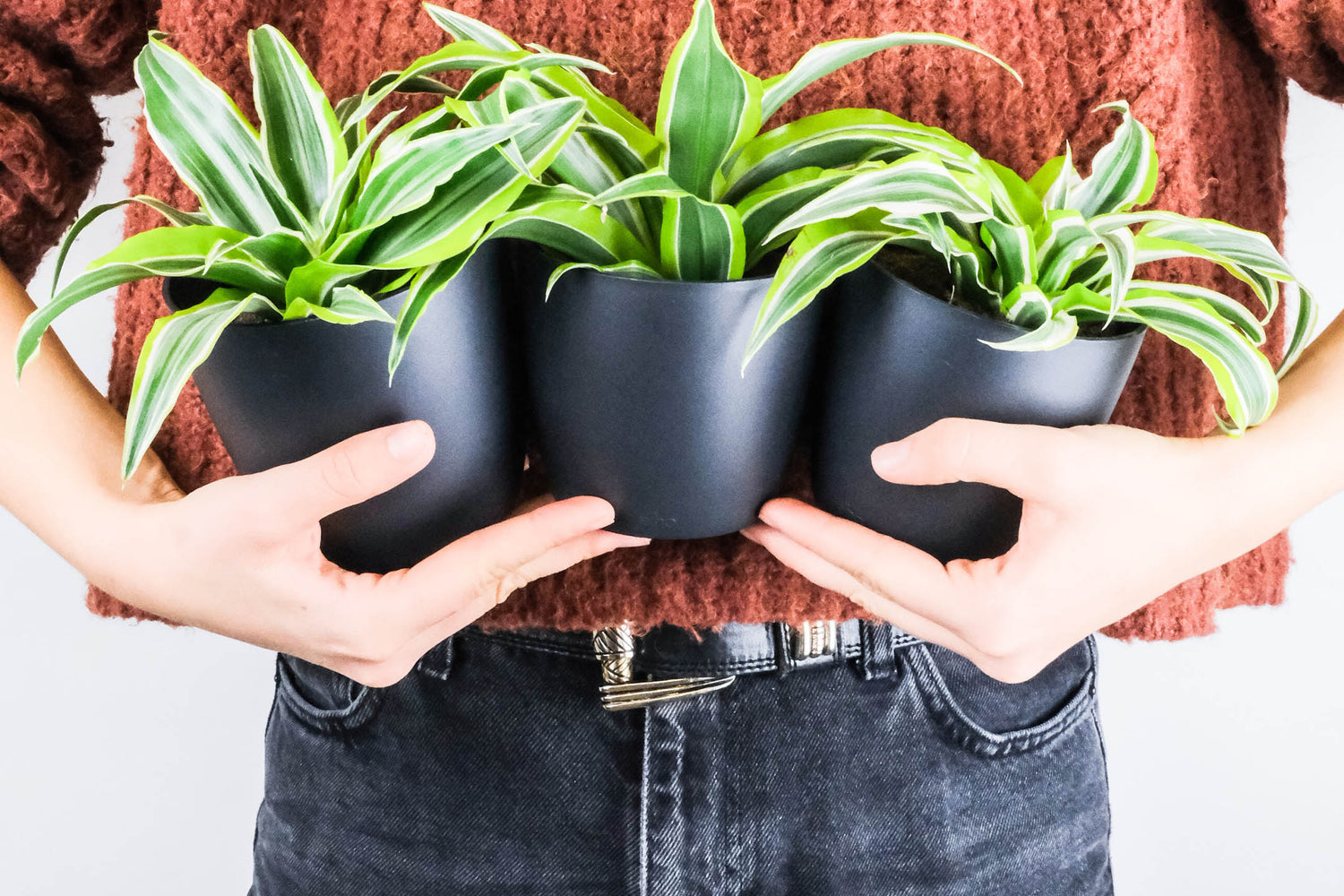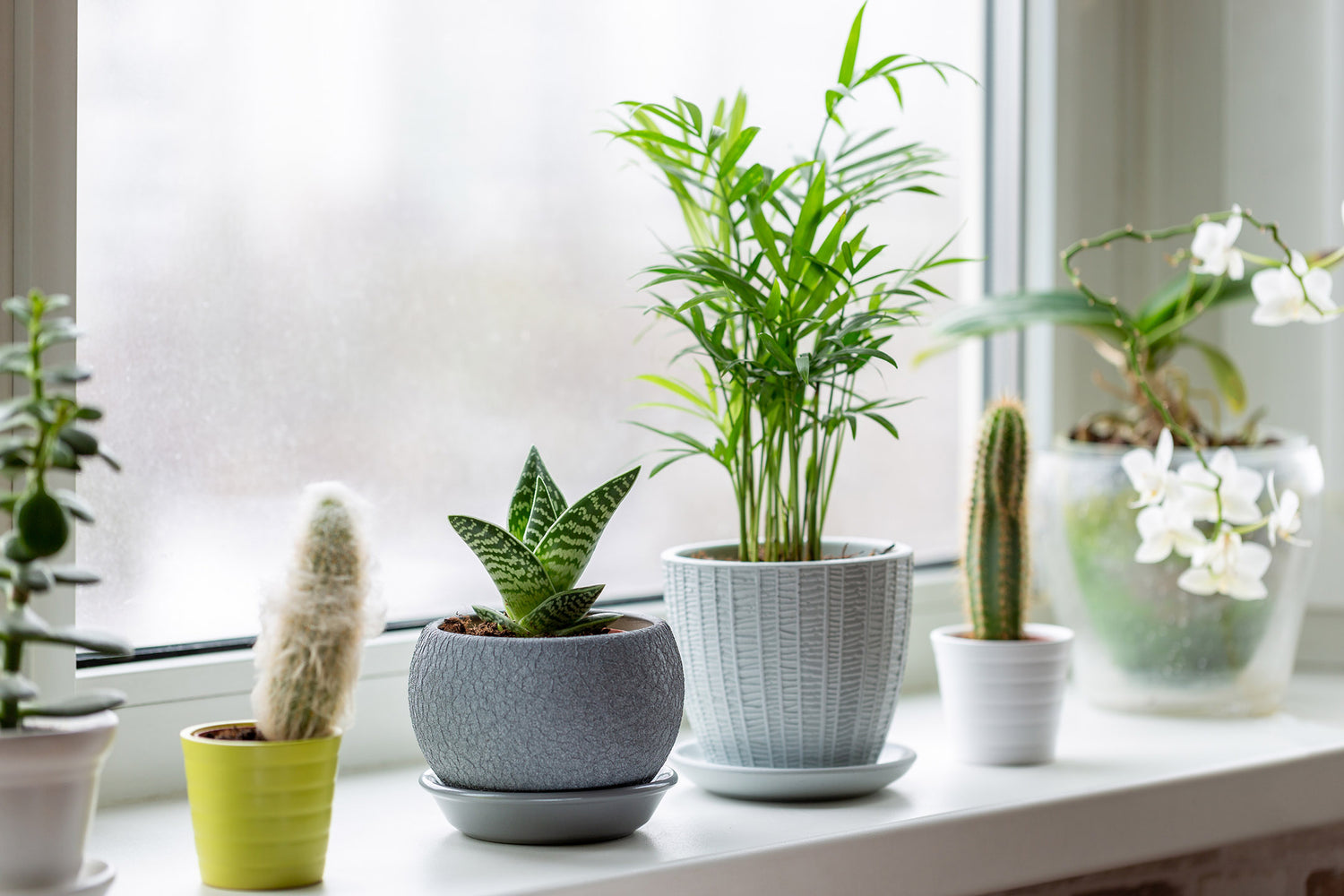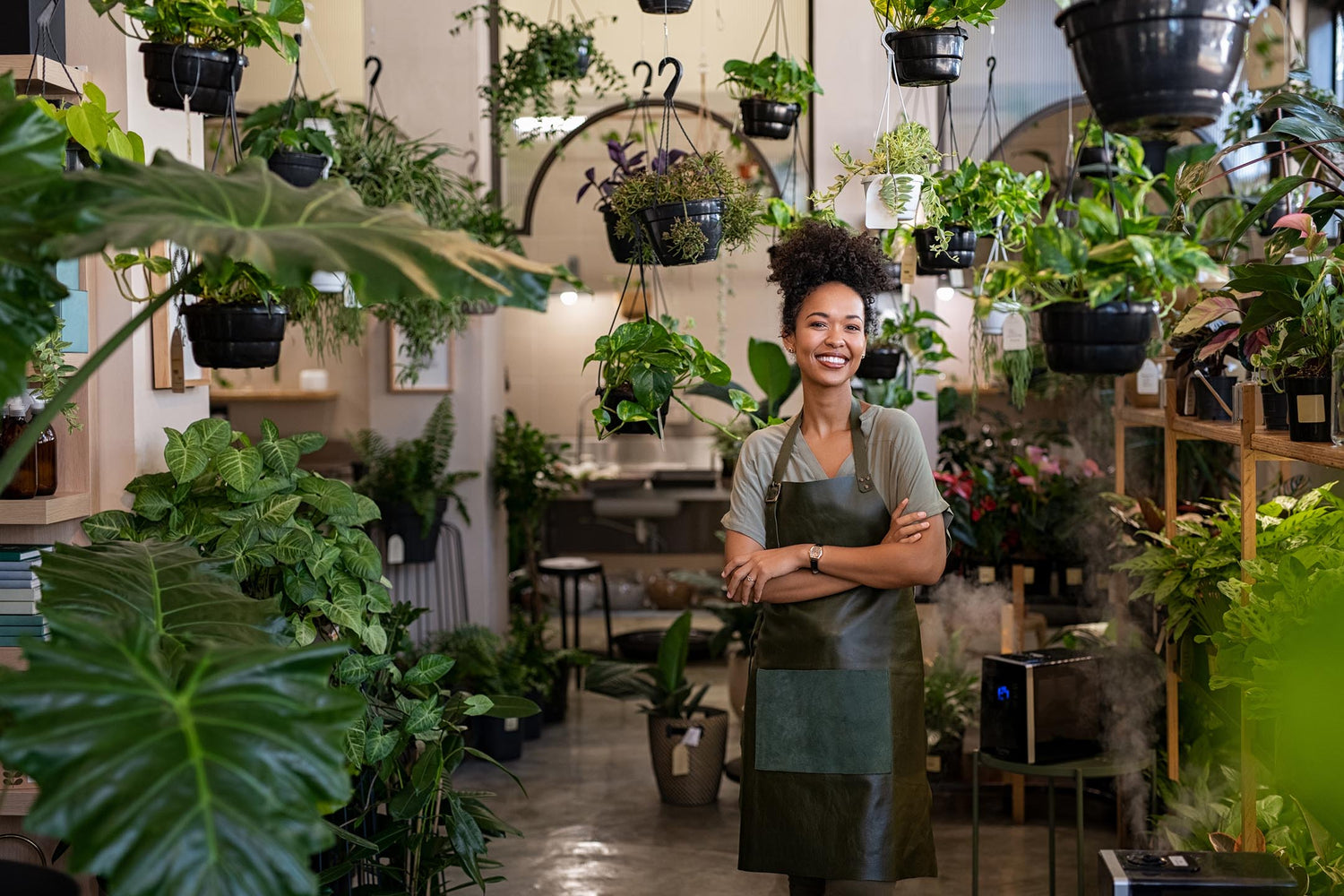We’ve all witnessed a sad drooping plant and tried to troubleshoot, wondering if we’ve over or under watered!
The delicate balance of keeping your indoor plants healthy can be a tricky subject, but one of the main problems with keeping indoor plants looking their best is drainage.
How do you make sure your beloved indoor greenery isn’t waterlogged? Do plant holders need holes?
In our helpful article, we will give you the definitive answer! But first, here's a little summary of the most important takeaway.
"In the majority of cases, most plants need drainage. With the exception of a few aquatic plants and some indoor plants, most plants will need to be in a pot with holes or additional drainage material. If it’s not possible to put holes in the pot, it’s best to double pot."
Ok so with the short answer in mind, let’s first take a look at why most house plants need adequate drainage and what happens if there aren’t any holes in your plant holders.
Why Do I Need to Put Holes in Plant Holders?
The unfortunate thing is once a plant's roots begin to rot, there is usually nothing that can be done to save it.

Root Rot
Waterlogged plants are not healthy or happy. One of the chief symptoms of failing to put holes in plant holders is a disease called root rot.
Waterlogged soil can lead to root rot, a serious condition that can easily kill your plants.
Signs of root rot include wilted leaves that don’t perk up after watering, yellow leaves, and leaf drop.
If you remove the plant from the container, you may see brown or black roots which look mushy or slimy.

"The unfortunate thing is once a plant's roots begin to rot, there is usually nothing that can be done to save it."
Salt Build-up
Another important reason to make sure that there is adequate drainage and holes in pots and plant holders is to prevent excessive salt build-up.
Some fertilizers and plant food can cause harmful salts which result in an unhealthy plant. It’s worth knowing that even tap water has salts that can cause deposits in the roots of your plants.
As they take in the water through their roots, the salt is left behind which can build up over time.
By having holes in the pot after watering thoroughly, the salts will be flushed away out of the soil and through the drainage holes.
How Do I Know if My Plant Has Salt Deposits?
It’s quite easy to figure out if you have excessive salt deposits. Here's a few things to look for:
- Brown leaves
- Brown crispy edges or tips on leaves
- White crust of salt on the top of your plants soil
"If salts do build up in your potting soil, you may see the plant’s leaves turning brown."
Which Plants Need Drainage Holes in Their Plant Holders?
You might be wondering if all plants need to be in pots with holes, so read on to find out more.
Plants in pots without drainage holes are prone to become overwatered. Even if the soil surface appears dry, the soil at the bottom of the pot may be sopping wet.
With the exception of a few aquatic plants, plant roots don’t like to sit in water.
They need to exchange oxygen and carbon dioxide with the air, and excess water closes off the air pockets in the soil.
So if your beautiful ceramic pot didn’t come with any drainage holes, there are a few things you can do to ensure your oasis of greenery doesn’t become sad and waterlogged!
"With the exception of a few aquatic plants, plant roots don’t like to sit in water."
What Do I Do If My Plant Holder Has No Drainage?

Place Your Plant On A Saucer
Many homeowners keep their houseplants sitting in saucers in order to protect their furniture or floor from drips.
This is fine, but make sure water does not just pool in the saucer, it can wick right back into the potting soil.
Make sure you regularly remove the water from the saucer.
You could also try watering your plants in the kitchen sink, then moving them back to the saucers after they drain.
"Make sure you regularly remove the water from the saucer, don't allow it to pool."
Drill Drainage Holes
If you are able to use a drill, you can create your own pot drainage holes.
Finding the right bit is important to make sure you can properly penetrate the material of your plant pot.
Which Drill Bit Do I Need To Make Drainage Holes In A Pot?
- Normal bit: metal and plastic pots
- Masonry bit: for unglazed ceramic pots
- Tile or glass bit: for glazed ceramic pots.
How To Drill Drainage Holes In Pots
Once you’ve worked out which bit you need follow these steps for drilling your drainage holes:
- Insert the appropriate 1/2-inch bit into the drill
- Spread some newspaper on the surface you’re drilling on
- Ensure the surface is as flat as possible
- Place the pot upside down on the paper
- Mark the spots you plan to drill. You need at least one drainage hole, which is usually placed in the center of the pot base
- You may add more holes for large-diameter pots, such as three holes arranged in a triangular pattern
- Keep holes at least 1 inch from the edge of the pot, and about 2 inches from the other holes
If you aren’t comfortable using a drill there are other ways to make sure your plant pot has enough drainage.
Let’s find out a few ways below.
Double Potting System
This method typically consists of potting up your plant in a smaller container with drainage holes, then place the smaller pot inside the larger, decorative pot.
For our modern indoor hanging planter, we suggest leaving your plant in it's grow pot! Then, just place the grow pot into your pot - here are some of our favorite pots from our online shop - perfectly sized for your plant hanger.
Every time you need to water, simply remove the grow pot or smaller container and water it in the sink. When it’s finished draining, replace it in the decorative pot. Easy peasy, and you won't damage the beautiful hardwood base of your modern indoor plant hanger from Braid & Wood.
Don’t forget to pop by our store for our range of beautiful pots and hangers in gorgeous neutral colorways such as sand, salt, and grey to bring a touch of minimal to your indoor greenery.
So now we’ve explored whether plant holders need holes and found the answer, you might be wondering if there are any plants that can be planted in a holder without holes!
Let’s find out more below.
Are There Any Plants That Don’t Need Holes?

Plants that don’t require holes in your stylish ceramic pot are always going to be a little less troublesome and easy to plant and enjoy!
The care requirements of these popular indoor plants will be significantly less than those types which require more in terms of drainage and other daily management.
- Snake Plant
- Oleander Plant
- Spider Plant
- Pineapple
- Chinese Evergreen
- Kupukupu Fern
- Crotons
- Dumbcane
- Pothos
- Cordyline
- Schefflera
- Rough horsetail
- Succulents
And Finally…
So we hope that’s helped anyone who’s wondering whether plant pots need holes and if they don’t have holes, what you can do to make sure they all have adequate drainage and stay healthy and happy!
Don’t forget to pop by our store for our range of beautiful pots and hangers in gorgeous neutral colorways such as sand, salt, and grey to bring a touch of minimal to your indoor greenery.





